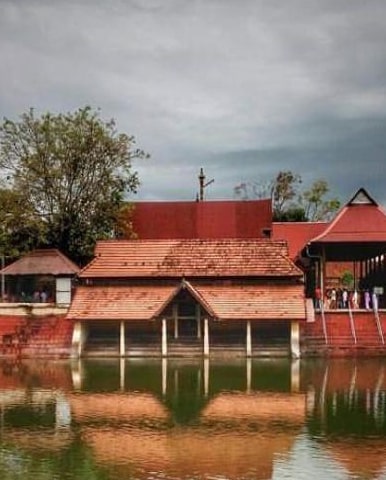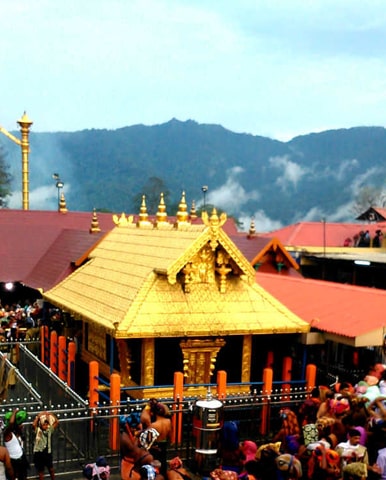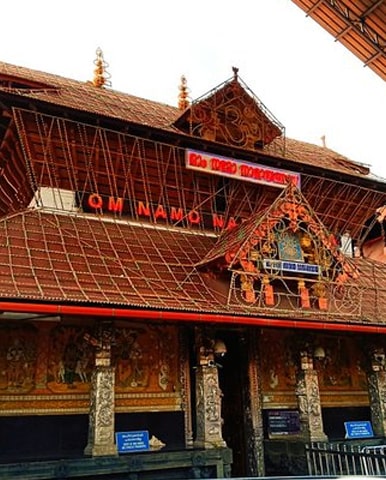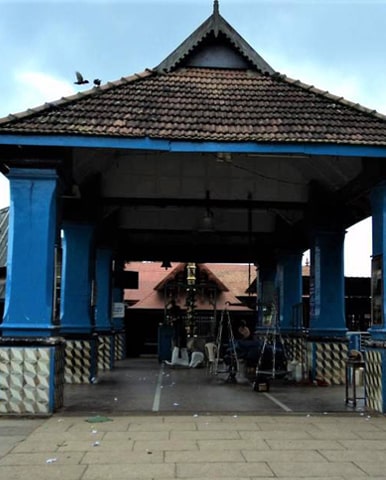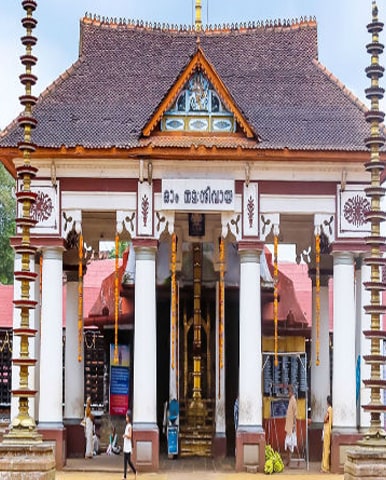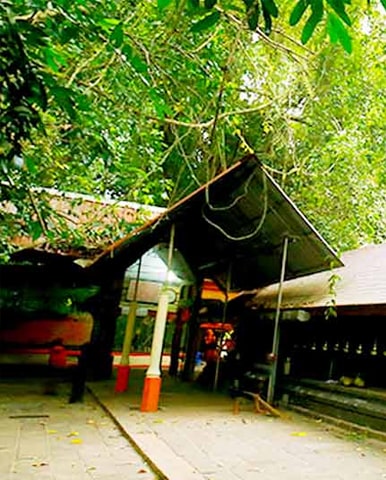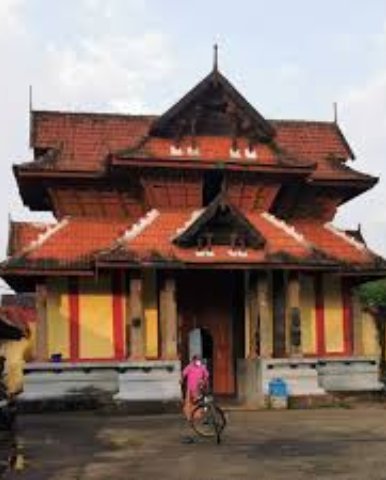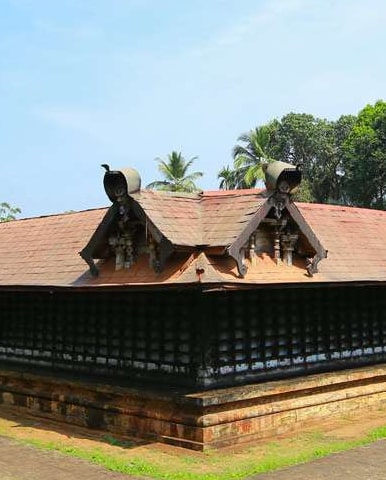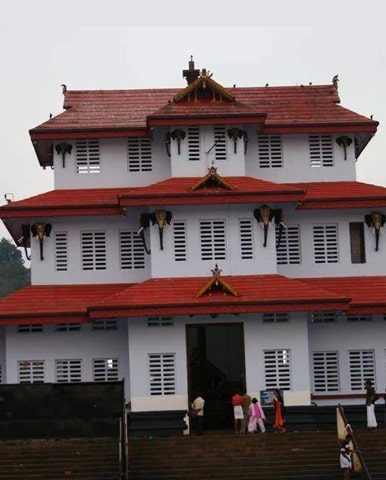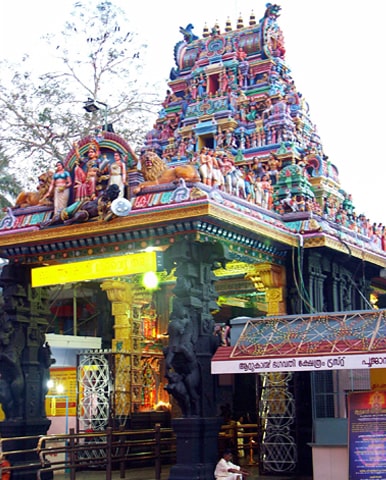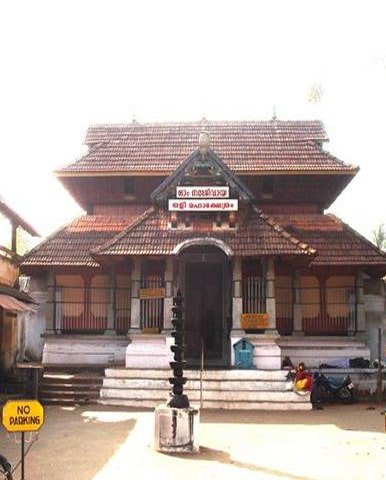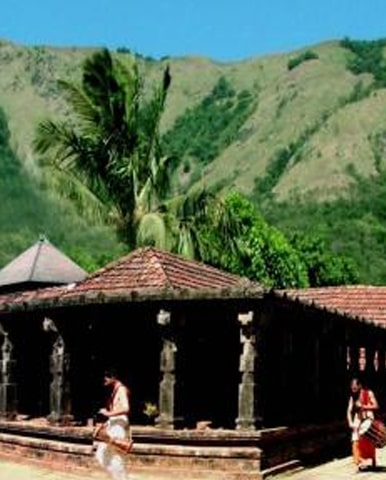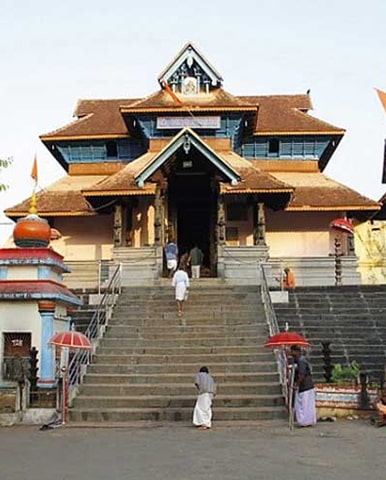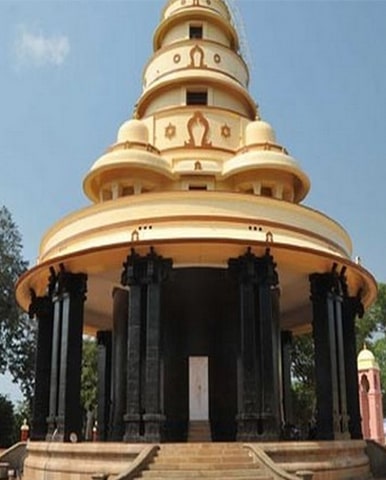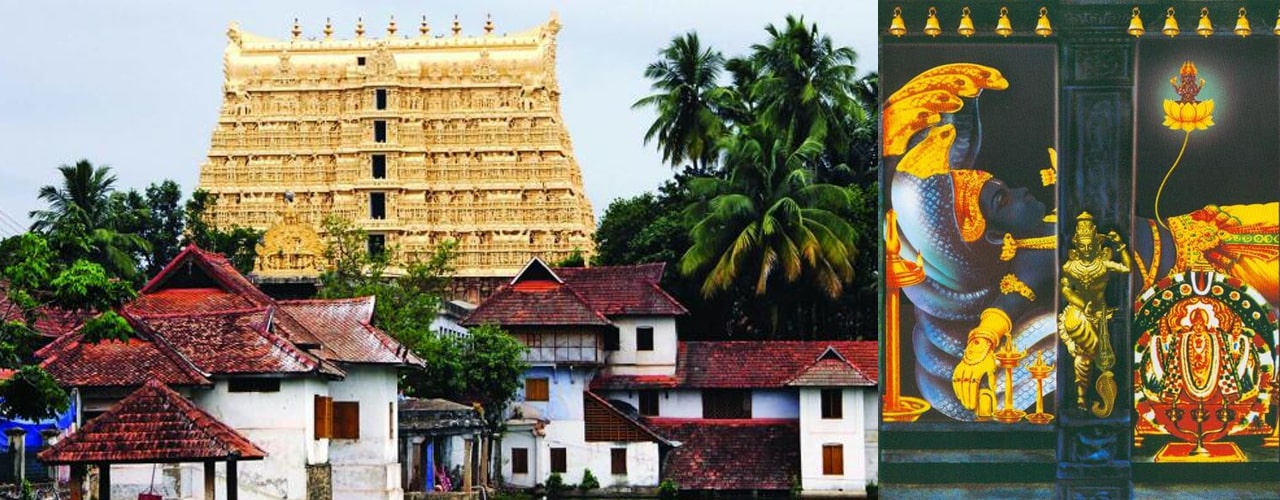
Sree Padmanabhaswamy Temple, Thiruvananthapuram
The Padmanabhaswamy temple is a Hindu temple placed in Thiruvananthapuram, the kingdom capital of Kerala, India. The name of the city of Thiruvananthapuram in Malayalam interprets to “The metropolis of Lord Ananta”,relating to the deity of the Padmanabhaswamy temple. The temple is built in an intricate fusion of the Chera style and the Dravidian style of structure, offering excessive partitions, and a 16th-century gopura.Even as the Ananthapura temple in Kumbla is considered the unique seat of the deity (“Moolasthanam”), architecturally to some extent, the temple is a duplicate of the Adikesava Perumal temple in Thiruvattar. The most important deity Padmanabhaswamy (Vishnu) is enshrined inside the “Anantha Shayana” posture, the eternal yogic sleep on the serpent Adi Shesha.Padmanabhaswamy is the tutelary deity of the royal circle of relatives of Travancore. The titular Maharaja of Travancore, Moolam Thirunal Rama Varma, is the trustee of the temple.
Several extant Hindu Texts, just like the Vishnu Purana,Brahma Purana,Matsya Purana,Varaha Purana,Skanda Purana,Padma Purana,Vayu Purana, Bhagavata Purana and the Mahabharata mention this shrine.The Temple has been mentioned in the (best recorded) Sangam length of literature among 500 BCE and 300 CE several instances.Many traditional historians and scholars are of the opinion that one of the names that the Temple had, “The Golden Temple”, literally become in recognition of the truth that the Temple became already unimaginably rich by means of that point.Many extant portions of Sangam Tamil literature and poetry, and later works of the ninth century of Tamil poet-saints like Nammalwar, confer with the temple and the town as having partitions of 24-karat gold.At some locations, each the temple and the complete town are often eulogised as being made from gold, and the temple as heaven. The temple is one of the 108 predominant Divya Desams (“Holy Abodes”) in Vaishnavism, and is glorified in the Divya Prabandha. The Divya Prabandha glorifies this shrine as being a few of the 13 Divya Desam in Malai Nadu (corresponding to give-day Kerala with Kanyakumari District).The 8th century Tamil poet Alvar Nammalvar sang the glories of Padmanabha.The Ananthapuram temple in Kasaragod is assumed to be the original seat of Padmanabhaswamy (“Moolasthanam”).
It is believed that Parasurama purified and venerated the idol of Sree Padmanabhaswamy in Dvapara Yuga. Parasurama entrusted ‘Kshethra karyam’ (administration of the Temple) with seven Potti households – Koopakkara Potti, Vanchiyoor Athiyara Potti, Kollur Athiyara Potti, Muttavila Potti, Karuva Potti, Neythasseri Potti and Sreekaryathu Potti. King Adithya Vikrama of Vanchi (Venad) become directed via Parasurama to do ‘Paripalanam’ (safety) of the Temple. Parasurama gave the Tantram of the Temple to Tharananallur Namboothiripad. This legend is narrated in detail in ‘Kerala Mahathmyam’ which bureaucracy part of ‘Brahmanda Puranam’. Every other version concerning the consecration of the principle Idol of the Temple relates to the legendary sage Vilvamangalathu Swamiyar. Swamiyar, who resided near Ananthapuram Temple in Kasaragod District, prayed to Lord Vishnu for his darshan or “auspicious sight”. The Lord is thought to have come within the guise of a bit boy who turned into mischievous. The boy defiled the Idol which was saved for Puja. The sage have become enraged at this and chased away the boy who disappeared earlier than him. Understanding the boy was no regular mortal, the sage wept for forgiveness and asked for any other darshan as a sign. He heard a voice say “in case you want to peer me come to the Anathavana (the never-ending forest or ananthakadu). After an extended search, when he was taking walks at the banks of Laccadive Sea, he heard a pulaya woman warning her toddler that she could throw him in Ananthankadu. The instant the Swami heard the phrase Ananthankadu he changed into overjoyed. He proceeded to Ananthankadu based on the directions of the woman of whom he enquired. The Sage reached Ananthankadu searching for the boy. There he saw the boy merging into an Iluppa tree (Indian Butter Tree). The tree fell down and became Anantha Sayana Moorti (Vishnu reclining on the celestial snake Anantha). But the edifice that the Lord assumed become of an pretty large size, with his head at Thiruvattar close to Thuckalay Tamil Nadu, frame or Udal at Thiruvananthapuram, and lotus-feet at Thrippadapuram near Kulathoor and Technopark (Thrippappur), making him a few eight miles in period. The Sage requested the Lord to shrink to a smaller proportion that might be thrice the duration of his group of workers. At once the Lord shrank to the form of the Idol that is seen at present in the Temple. But even then many Iluppa trees obstructed a complete vision of the Lord. The Sage saw the Lord in 3 components – thirumukham, thiruvudal and thrippadam. Swami prayed to Padmanabha to be forgiven.
The Swami offered Rice Kanji and Uppumanga (salted mango portions) in a coconut shell to the Perumal which he acquired from the pulaya female. The spot wherein the Sage had darsan of the Lord belonged to Koopakkara Potti and Karuva Potti. With the help of the reigning King and some Brahmin families a Temple was built.The Ananthankadu Nagaraja Temple nonetheless exists to the north west of the Padmanabhaswamy Temple. The Samadhi (final resting region) of the Swamiyar exists to the west of the Padmanabhaswamy Temple. A Krishna Temple became built over the Samadhi. This Temple, known as Vilvamangalam Sri Krishna Swami Temple, belongs to Thrissur Naduvil Madhom. Mukilan, a Muslim marauder, invaded considerable chunks of Venad in 1680 ad.He destroyed Budhapuram Bhaktadasa Perumal Temple owned by means of Neythasseri Potti. Mukilan had plans to plunder the vaults of Sree Padmanabhaswamy Temple and smash it. But he changed into dissuaded from doing so with the aid of nearby Pathans dependable to the Royals of Venad. Padmanabhan Thampi, arch rival of Anizhom Thirunal Marthanda Varma, marched to Thiruvananthapuram with his forces and attempted to loot the vaults of the Temple. Thampi stayed at Sri Varaham and despatched his mercenaries to Sree Padmanabhaswamy Temple. It’s far stated that divine serpents materialised in hundreds and scared away Thampi’s guys. Emboldened by way of this heavenly intervention, Pallichal Pillai and local people opposed Padmanabhan Thampi and ensured that the mercenaries did not continue with the misadventure.
Share This Post:
How to reach
- By Road: KSRTC, Thiruvanathapuram (1km)
- By Train: Railway Station Thiruvanathapuram (1km)
- By Air: Nearest airport is Thiruvanathapuram (4 Km)
Related Temples
How to reach
- Nearest airport is Thiruvanathapuram
- Nearest railway station is Thiruvanathapuram
- Nearest bus station is Thiruvanathapuram

